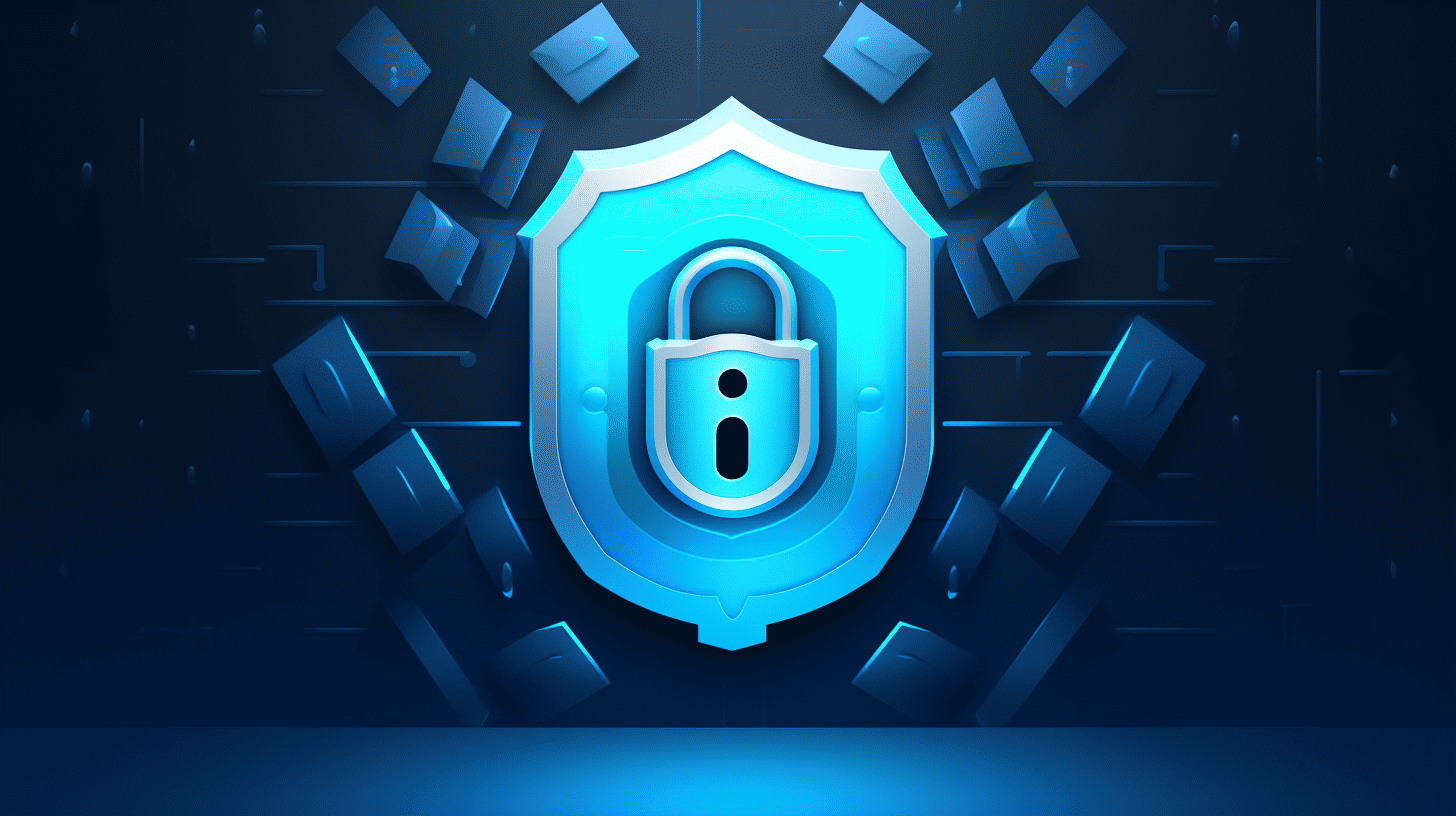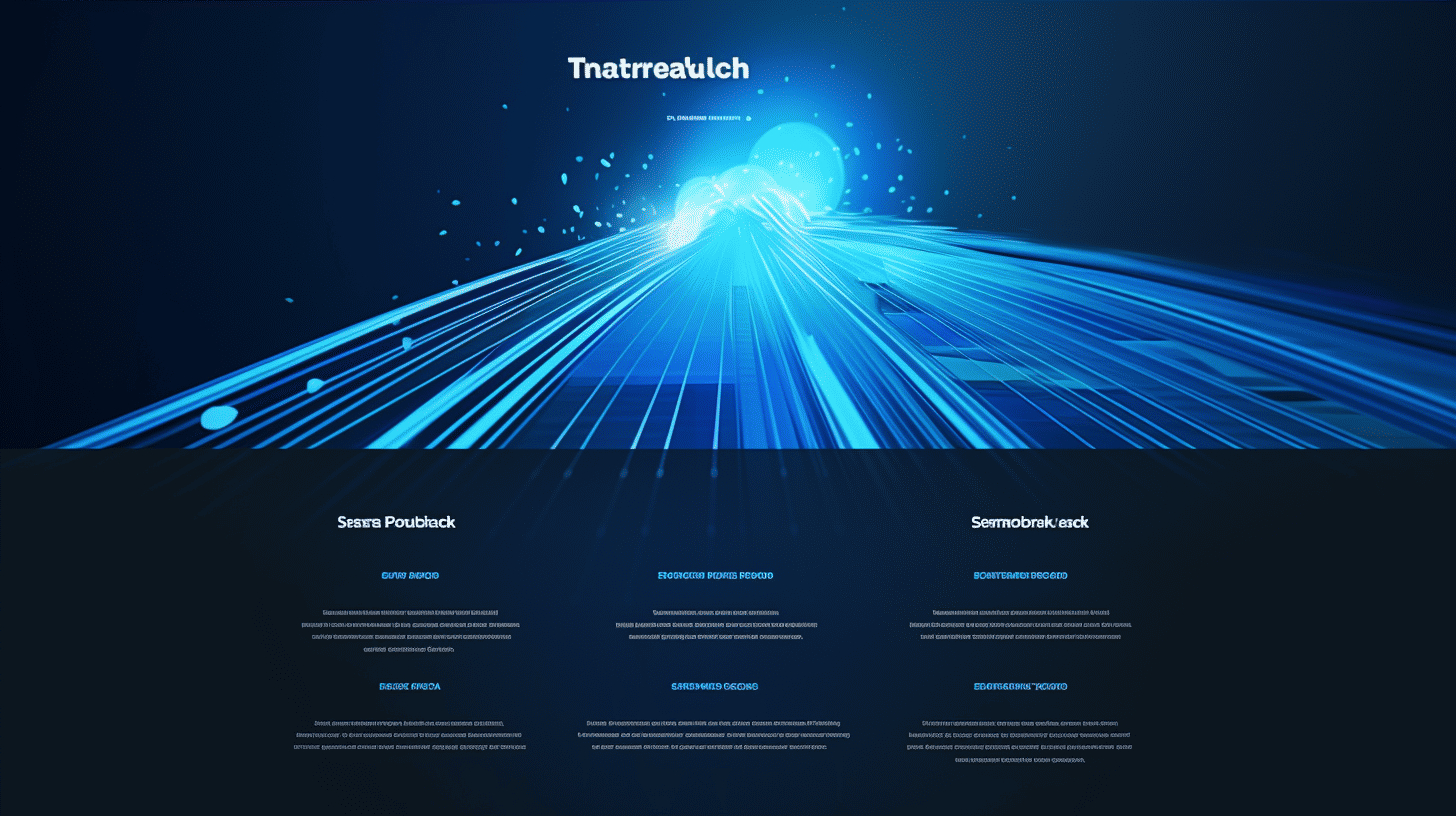您是否希望提高您的線上聲譽並保護您的網站免受潛在威脅?可靠的 WordPress 安全措施就是最好的選擇。在線狀態至關重要的數位時代,確保您的 WordPress 網站的安全至關重要。由於數以百萬計的網站都在運行 WordPress,因此它成為駭客和惡意攻擊的常見目標也就不足為奇了。
在本文中,我們將探討 WordPress 網站面臨的常見漏洞以及實施強大安全措施的重要性。我們還將深入研究一些適用於 WordPress 的領先安全插件,以及確保您網站安全的最佳實踐。無論您是小型企業主還是經驗豐富的部落客,本文都將為您提供相關知識,以加強您的線上形象並保護您的寶貴數據。那麼,讓我們深入研究並發現如何透過可靠的 WordPress 安全性來提高您的線上聲譽。
WordPress 中的常見漏洞
WordPress 是最受歡迎的內容管理系統之一,全球有數百萬個網站在使用。然而,與任何軟體一樣,它也無法避免漏洞。了解這些漏洞對於網站所有者和開發人員確保其 WordPress 網站的安全至關重要。在本文中,我們將探討 WordPress 中的一些常見漏洞,包括外掛漏洞、WordPress 核心漏洞和主題漏洞。
插件漏洞
外掛程式是擴展 WordPress 網站功能的絕佳方法。然而,如果沒有適當的維護或開發,它們也可能帶來巨大的風險。根據知名 WordPress 漏洞資料庫 WPScan 的數據,已知的 WordPress 漏洞中約有 52% 是由外掛程式引起的1.
以下是插件容易受到攻擊的一些常見原因:
- 過時的版本:使用過時版本的外掛程式可能會使您的網站容易受到已知漏洞的攻擊。定期更新您的插件以包含插件開發人員發布的安全性修補程式至關重要。
- 不安全的編碼實踐:編碼不良的插件和不安全的編碼實踐可能會為駭客提供利用的切入點。
- 缺乏安全審計:一些插件開發人員可能沒有徹底測試他們的插件是否有安全漏洞,導致其容易受到攻擊。
為了減輕這些風險,以下是一些插件安全的最佳實踐:
- 定期更新:始終保持插件為最新版本,以便受益於最新的安全措施和錯誤修復。
- 選擇值得信賴的來源:僅安裝來自信譽良好的來源的插件,例如官方 WordPress 插件目錄或知名的第三方開發人員。
- 閱讀評論和評級:在安裝插件之前,請檢查其評論和評級以確保其可靠性和安全性。
- 刪除未使用的插件:刪除不再使用的插件以盡量減少潛在的漏洞。
WordPress 核心漏洞
WordPress 不斷發展以提高安全性和功能性。然而,WordPress 核心本身仍然存在漏洞,這可能會產生深遠的影響。據 WPScan 稱,大約 37% 的已知 WordPress 漏洞是由 WordPress 核心缺陷引起的1.
WordPress 核心漏洞的常見原因包括:
- 過時的版本:與外掛類似,使用過時版本的 WordPress 核心可能會使您的網站面臨已知的安全漏洞。始終保持你的 WordPress 安裝為最新版本。
- 暴力攻擊:WordPress 經常受到暴力攻擊,駭客透過反覆猜測使用者名稱和密碼來嘗試獲得未經授權的存取。
為了保護您的 WordPress 網站免受核心漏洞的侵害,請考慮以下安全措施:
- 定期更新:確保您使用的是最新版本的 WordPress,以便享受最新的安全性增強功能。
- 強大的登入憑證:為您的 WordPress 管理員帳戶使用強大、獨特的密碼,並鼓勵您的用戶也這樣做。
- 限制登入嘗試:利用外掛程式或安全措施限制登入嘗試次數,以防止暴力攻擊。
主題漏洞
主題控制您的 WordPress 網站的視覺設計。與外掛類似,如果開發或維護不當,主題也可能引入漏洞。根據 WPScan 統計,已知的 WordPress 漏洞中約有 11% 是由主題漏洞引起的1.
以下是主題容易受到攻擊的一些原因:
- 過時的版本:過時的主題版本可能包含安全漏洞,可被攻擊者利用。
- 第三方主題:從未經授權的來源或不值得信任的開發人員獲得的主題可能會帶來重大的安全風險。
為了增強 WordPress 主題的安全性,請考慮以下措施:
- 定期更新:保持您的主題更新以減輕潛在的漏洞。
- 選擇值得信賴的來源:從信譽良好的來源獲取主題,例如官方 WordPress 主題目錄或知名主題開發商。
- 刪除未使用的主題:從您的 WordPress 安裝中刪除未使用的主題以減少潛在的攻擊面。
透過了解和解決 WordPress 中的這些常見漏洞,您可以顯著降低網站安全的潛在風險。實施最佳實踐,例如定期更新、選擇可信任來源以及刪除未使用的外掛程式和主題,將大大有助於保護您的 WordPress 網站。
1: WPScan 漏洞資料庫
WordPress 安全的重要性
介紹:
當談到經營網站時,安全性應該是首要考慮的。隨著網路攻擊日益猖獗,採取必要措施保護您的 WordPress 網站至關重要。在本文中,我們將探討 WordPress 安全性的重要性以及為什麼您應該將其作為網站的優先事項。
第 1 部分:針對 WordPress 網站的大量攻擊
WordPress 無疑是全球最受歡迎的內容管理系統 (CMS) 之一。其用戶友好的介面、龐大的插件庫和可自訂的主題使其成為數百萬網站所有者的首選平台。然而,它的流行並非沒有缺點——WordPress 網站是駭客的主要目標。以下是一些令人大開眼界的統計數據:
- 每分鐘有近 90,000 次攻擊針對 WordPress 網站[1].
- 在全球發生的網路攻擊總量中,WordPress 網站佔了相當大一部分。
- 絕大多數攻擊都是自動化的,利用已知的漏洞和薄弱的安全措施。
第 2 部分:WordPress 作為常見目標
網路上約 43% 的網站使用 WordPress[2],毫不奇怪,它已成為駭客的常見目標。這就是為什麼 WordPress 經常被單獨挑出來的原因:
- 受歡迎程度:WordPress 網站的數量眾多,這意味著駭客可以選擇的目標範圍更大。
- 漏洞:雖然 WordPress 本身是一個安全的平台,但編碼不良的主題和外掛程式、過時的軟體版本或弱密碼可能會產生漏洞。
- 存取敏感資訊:許多 WordPress 網站儲存敏感信息,如客戶資料、信用卡詳細資訊和個人資訊。這些數據對於駭客來說非常有價值,可以用於惡意目的。
總而言之,在當今的數位環境中,保護您的 WordPress 網站不是奢侈的,而是必需的。沒有任何網站能夠 100% 防禦駭客,但採取主動措施並實施強大的安全實踐可以顯著降低成功攻擊的風險。在本文的下一部分中,我們將探討一些實用技巧和最佳實踐,以幫助保護您的 WordPress 網站,保護您的數據,並為您的訪客提供安全的瀏覽體驗。
[1] WordPress 攻擊統計
[2] WordPress 使用統計
領先的 WordPress 安全插件
在當今的網路環境中,網站安全比以往任何時候都更加重要。隨著網路威脅的增加,採取強大的安全措施來保護您的 WordPress 網站免受惡意攻擊至關重要。值得慶幸的是,有幾種領先的 WordPress 安全性外掛程式可以幫助保護您的網站並確保其完整性。這些主要競爭者包括 Sucuri、Wordfence 和 MalCare。
Sucuri:業界領先的安全插件
Sucuri 是 WordPress 安全性領域的行業領導者之一,它提供了全面的安全插件,受到 Web 開發人員和網站所有者的高度評價。以下是 Sucuri 脫穎而出的一些主要特點:
- 網站防火牆: Sucuri 的高級網站防火牆可透過過濾惡意流量、阻止有害請求和阻止已知攻擊者的訪問來保護您的網站。
- 惡意軟體掃描: Sucuri 會定期進行惡意軟體掃描,以偵測並刪除您的 WordPress 網站中的任何惡意程式碼,確保其清潔和安全。
- 安全加固: 該外掛提供了各種安全強化功能,有助於加強您網站的安全性,例如實施強密碼策略、限制登入嘗試以及封鎖可疑 IP 位址。
- 事件響應: 如果不幸發生安全漏洞,Sucuri 的事件回應團隊將全天候為您提供協助,恢復您的網站並恢復其功能。
Sucuri 的聲譽及其令人印象深刻的安全功能使其成為希望加強網站以抵禦潛在威脅的 WordPress 用戶的熱門選擇。
Wordfence:下載的強大工具
Wordfence 擁有超過 400 萬個活躍安裝,是市面上下載次數最多的 WordPress 安全性外掛程式。它的受歡迎程度可歸因於其廣泛的功能,其中包括:
- 即時威脅偵測: Wordfence 持續監控您的網站並即時提醒您任何潛在的安全威脅,確保及時採取行動。
- 登入安全: 該外掛程式提供增強的登入安全功能,例如雙重認證、密碼強度強制執行以及限制登入嘗試次數的能力。
- 進階惡意軟體掃描: Wordfence 採用最先進的掃描技術來偵測並刪除您網站中的惡意軟體,從而確保其安全。
- 防火牆保護: Wordfence 採用強大的防火牆來阻止可疑流量並保護您的網站免受暴力攻擊和其他駭客攻擊。
廣泛的用戶群和先進的安全功能相結合,使 Wordfence 成為尋求強大安全性外掛程式的 WordPress 用戶的可靠選擇。
MalCare:綜合解決方案
MalCare 被許多人認為是 WordPress 的最佳安全插件,它提供了一套全面的功能,旨在保護您的網站。這就是 MalCare 與眾不同之處:
- 一鍵刪除惡意軟體: MalCare 提供了無縫的惡意軟體清除流程,讓您只需點擊即可從您的網站消除任何惡意程式碼。
- 深度網站掃描: MalCare 對您網站的文件和資料庫進行細緻的掃描,以識別任何潛在的安全漏洞,確保全面的保護。
- 登入保護: 該外掛提供登入保護措施,例如限制失敗的登入嘗試、IP 封鎖和雙重認證,以防止未經授權存取您的 WordPress 網站。
- 網站強化: MalCare 提供各種安全性強化功能,包括檔案權限管理、漏洞修補和資料庫最佳化,以增強您的網站抵禦潛在威脅。
MalCare 具有全面的掃描功能和易於使用的介面,對於尋求一流安全插件的 WordPress 用戶來說,它仍然是一個受歡迎的選擇。
綜上所述
雖然 Sucuri、Wordfence 和 MalCare 都是增強 WordPress 網站安全性的絕佳選擇,但每個外掛程式都提供了其獨特的功能和優勢。仔細評估您網站的特定安全需求並選擇符合您要求的外掛程式至關重要。
如需更深入地比較這些領先的 WordPress 安全插件,您可以查看此 文章 它提供了詳細的分析並幫助您做出明智的決定。
WordPress 安全最佳實踐
WordPress 是一個廣泛使用的網站平台,雖然它提供了一系列功能和自訂選項,但優先考慮安全性至關重要。實施適當的安全措施可以幫助保護您的網站免受潛在威脅並確保您寶貴資料的安全。在本文中,我們將探討一些您可以實施的 WordPress 安全最佳實踐來保護您的網站。
實施 SSL 憑證
保護您的 WordPress 網站的一個重要步驟是實施 SSL 憑證。 SSL(安全通訊端層)是一種在您的網站和其使用者的瀏覽器之間建立加密連線的技術。這種加密有助於保護敏感資訊(例如登入憑證和個人資料)不被駭客攔截。
若要實施 SSL 證書,您可以依照下列步驟操作:
- 從受信任的憑證授權單位 (CA) 取得 SSL 憑證。許多託管服務提供者提供從其平台直接購買和安裝 SSL 憑證的選項。
- 在您的 Web 伺服器上安裝 SSL 憑證。這通常可以透過您的主機服務提供者的控制面板或按照他們提供的說明來完成。
- 設定您的 WordPress 網站以使用 HTTPS 而不是 HTTP。這將確保您的網站和用戶之間的所有通訊都是加密的。
透過實作 SSL 證書,您不僅可以增強網站的安全性,還可以幫助與訪客建立信任,因為他們會在瀏覽器的網址列中看到安全掛鎖符號。
使用強密碼
使用強大而獨特的密碼是 WordPress 安全的一個基本面向。弱密碼是駭客試圖未經授權存取您的網站的主要切入點之一。透過使用強密碼,您可以降低 WordPress 登入憑證外洩的風險。
以下是創建強密碼的一些技巧:
- 使用大寫和小寫字母、數字和特殊字元的組合。
- 避免使用常見的字典單字或容易猜到的短語。
- 不要在多個網站上使用相同的密碼。
- 考慮使用密碼管理器來儲存和產生唯一的密碼。
請記住,強密碼只有在保密的情況下才有效。避免與任何人共享您的 WordPress 登入憑證,並確保定期更改密碼以增加安全性。
安裝安全插件
另一個有價值的做法是安裝專為 WordPress 設計的安全性外掛程式。這些外掛程式透過掃描您的網站是否有漏洞、監控可疑活動以及實施各種安全措施來提供額外的保護層。
以下是一些流行的 WordPress 安全性外掛:
- 字柵欄:提供全面的安全解決方案,具有惡意軟體掃描、防火牆保護和登入安全性等功能。
- 蘇庫里安全:提供網站監控、惡意軟體掃描和防火牆保護。
- i主題安全:提供各種安全增強功能,例如雙重認證、暴力破解保護和資料庫備份。
安裝安全插件可以幫助自動化許多安全任務並提供額外的防禦層來抵禦潛在威脅。
總之,實施 SSL 憑證、使用強密碼和安裝安全性外掛程式是推薦的 WordPress 安全性實務。透過遵循這些最佳實踐,您可以顯著增強 WordPress 網站的安全性,並最大限度地降低未經授權的存取和資料外洩的風險。
定期更新和額外的安全措施
在維護 WordPress 網站的安全性方面,定期更新和額外的安全措施是絕對必要的。本節將探討一些可協助保護您的 WordPress 網站安全的關鍵做法。
定期更新 WordPress 核心、主題和插件
確保 WordPress 網站安全的最重要步驟之一是定期更新其核心、主題和外掛程式。原因如下:
- 安全補丁:開發人員經常發布更新來解決安全漏洞並修補任何潛在的漏洞。透過保持更新,您可以保護您的網站免受已知漏洞的侵害。
- 相容性:更新不僅提供安全性修復,而且還確保與最新版本的 WordPress 和其他元件(如主題和外掛程式)相容。
- 新功能:更新可能會引入新功能,以增強您網站的功能和安全性。
請記住,在更新任何內容之前務必備份您的網站,因為如果在更新過程中出現任何問題,它可以充當安全網。
雙重身份驗證和預設使用者名稱更改
增強 WordPress 網站安全性的另一種有效方法是實施雙重認證並更改預設使用者名稱。這些措施至關重要的原因如下:
- 雙重身份驗證:雙重認證為您的登入增加了額外的安全保障,它要求您提供額外的信息,例如發送到您手機的唯一代碼,以及您的用戶名和密碼。
- 更改預設用戶名:透過更改預設使用者名稱(通常為「admin」),可以讓潛在攻擊者更難猜測您的登入憑證。
這些相對簡單的步驟可以大大防止未經授權存取您的網站。
安全編碼實踐與伺服器強化
開發人員透過安全編碼實踐和伺服器強化在確保 WordPress 網站的安全方面發揮關鍵作用。這意味著什麼:
- 安全編碼實踐:開發人員應遵循最佳實踐,以防止常見漏洞,如跨站點腳本 (XSS) 和 SQL 注入攻擊。這包括清理使用者輸入、驗證資料以及使用安全函數和函式庫。
- 伺服器強化:實施伺服器級安全措施,例如防火牆、入侵偵測系統和適當的配置設置,可以進一步保護您的 WordPress 網站免受潛在入侵。
開發人員和網站所有者之間的合作是有效實施這些安全實踐的關鍵。
掃描漏洞並使用安全掃描程序
定期掃描 WordPress 網站是否有漏洞是識別潛在安全風險的有效方法。安全掃描器可以透過以下方式幫助實現此流程的自動化:
- 掃描已知漏洞:安全掃描程式可以識別 WordPress 核心、主題和外掛程式中已知的漏洞,讓您採取必要的措施來解決這些漏洞。
- 檢查惡意軟體:這些工具還可以偵測您網站上的惡意軟體感染,幫助您刪除任何惡意程式碼並加強您網站的安全性。
確保選擇符合您的需求並提供定期更新的知名安全掃描程序。
檔案和目錄權限
調整託管等級的檔案和目錄權限可以為您的 WordPress 網站增加額外的安全層。它的作用如下:
- 限制未經授權的訪問:透過設定適當的權限,您可以限制對託管伺服器上的敏感文件和目錄的訪問,防止未經授權的個人篡改您網站的文件。
- 防止漏洞利用:不正確的檔案和目錄權限會使攻擊者更容易利用漏洞。透過正確配置權限,您可以降低此類漏洞的風險。
請務必根據您的託管環境仔細檢查並設定適當的文件和目錄權限。
總之,實施定期更新和額外的安全措施對於維護 WordPress 網站的安全性至關重要。透過遵循這些做法並積極主動地採取安全措施,您可以大大降低未經授權的存取和潛在漏洞的風險。
結論
在了解 WordPress 中常見的漏洞、保護網站安全的重要性、領先的 WordPress 安全性外掛程式以及維護安全 WordPress 網站的最佳實踐之後,顯然採取主動措施來提高您的線上聲譽至關重要。透過實施可靠的 WordPress 安全措施,例如定期更新插件、主題和核心、使用強密碼以及安裝 Sucuri、Wordfence 或 MalCare 等安全插件,您可以大大降低安全漏洞的風險並保護您的網站免受潛在攻擊。
請記住,維護安全的 WordPress 網站是一個持續的過程,需要定期監控和更新。透過遵循這些最佳實踐並了解最新的安全趨勢,您可以保護您的線上狀態並為您的訪客提供安全的瀏覽體驗。
如果您正在尋找一個優質的管理式 WordPress 雲端託管平台,以簡化基礎設施、提供自由的數位體驗並提供專家 24/7/365 的問題解決方案,請考慮 Managed-WP.™ 憑藉其可靠的託管服務和專門的支援團隊,您可以專注於擴大您的線上影響力,而他們則負責處理 安全的 WordPress技術方面。訪問他們的網站 管理-wp.com 了解更多並邁出安全、成功的 WordPress 網站的第一步。
請記住,保護您的 WordPress 網站對於維護良好的線上聲譽至關重要。不要讓您的網站容易受到攻擊—立即採取行動保護您的投資並確保您的訪客獲得安全的瀏覽體驗。
常見問題解答
- 為什麼 WordPress 安全性對於提高網路聲譽很重要?
WordPress 安全性對於提高線上聲譽至關重要,因為它可以防止駭客攻擊、保護敏感資料、確保網站正常運作、維護使用者信任並保障您的線上品牌形象。
- 有哪些可靠的 WordPress 安全性外掛?
一些可靠的 WordPress 安全性外掛是:1. Sucuri Security、2. Wordfence Security、3. iThemes Security、4. All In One WP Security & Firewall 和 5. BulletProof Security。
- 我的 WordPress 網站需要安全外掛嗎?
是的,強烈建議為您的 WordPress 網站安裝安全插件,因為它可以增加多層保護、偵測和阻止惡意軟體、加強登入安全性並提供定期的安全性掃描和警報。
- WordPress 安全性外掛程式如何提升我的網站的聲譽?
WordPress 安全性外掛程式可以透過維護安全環境、及時解決漏洞、防止惡意活動、保護使用者資料以及確保網站功能不中斷來提高您網站的聲譽。
- WordPress 安全性的一些最佳實踐是什麼?
WordPress 安全性的一些最佳實踐包括保持 WordPress 和外掛程式/主題為最新版本、使用強密碼、限制登入嘗試次數、定期備份您的網站、使用 SSL 憑證以及實施 Web 應用程式防火牆。



















